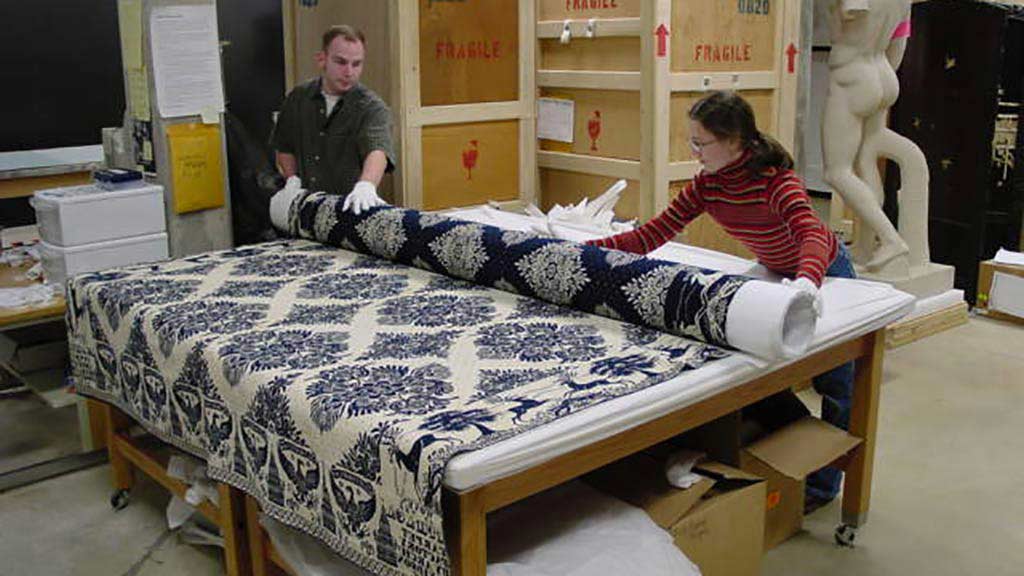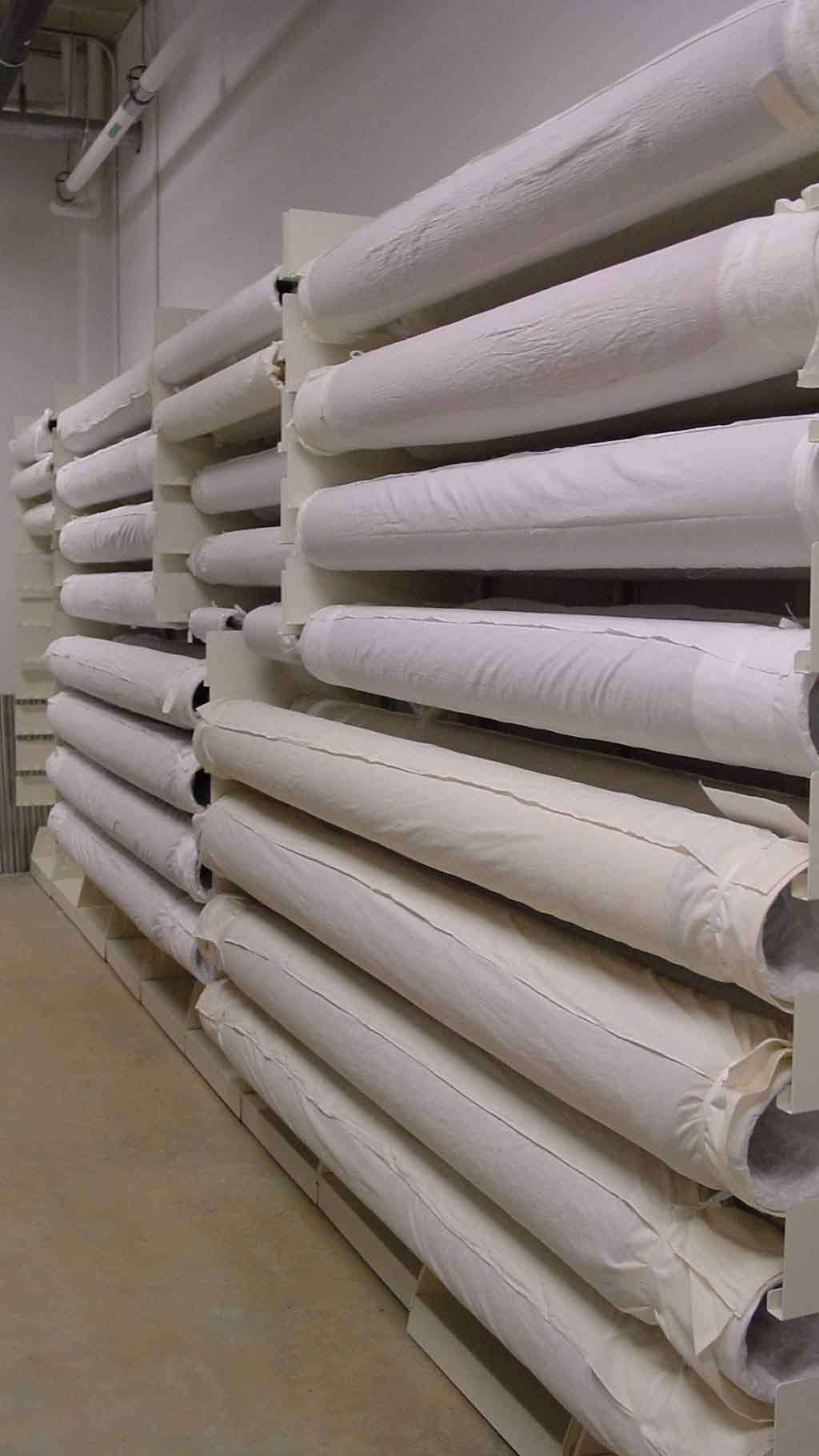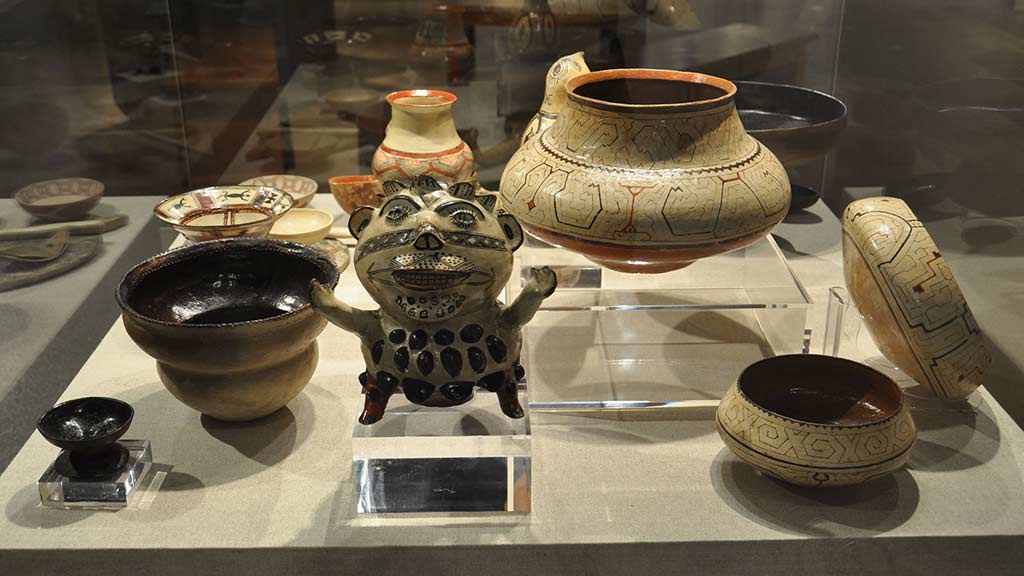
Behind the Scenes: Textile Rolling
- Post Date: 7/5/2002
- Reading Time: 2 minute read
No museum would be complete without its Collection Management section. It is this section's responsibility to ensure the safety of each artifact. Here at the Spurlock Museum, we followed Collection Assistants Sarah Erekson and Jay Lind for a behind-the-scenes view of the Museum's storage facilities. Sarah and Jay are members of a highly-trained team who aide in the care of the Museum's 45,000 artifacts. Today, they are demonstrating one of the textile storage solutions implemented at the Museum.
What are textiles? Essentially, textiles are woven fabrics, though this category of artifact also includes animal skins and beaten fibers, such as bark cloth. Textiles come in all shapes, sizes, and conditions and are used for a variety of purposes, such as clothing, decoration, household goods, and housing materials.
The textiles shown in these images are single-layer textiles, such as coverlets. These pieces are most efficiently stored by rolling them on specially prepared tubes that are then placed on racks. Rolling preserves the textiles by preventing the creation of creases and folds-the places where damage can occur most quickly and completely. Other textile storage methods include the padding of folded areas or other stress points when the object is displayed or boxed and placing the textile in a large storage drawer that allows it to lie flat and be removed easily.
-
- Share:
- Subscribe to Newletter
- Giving


